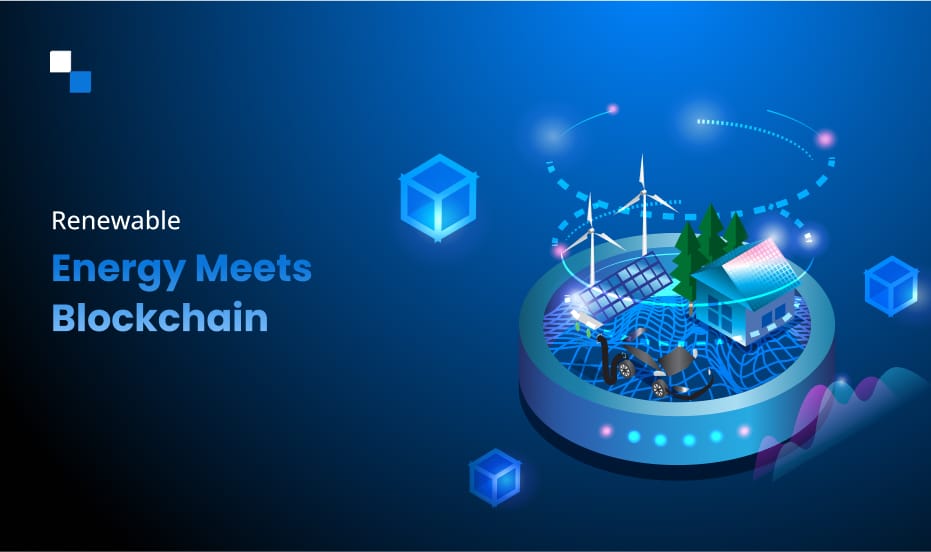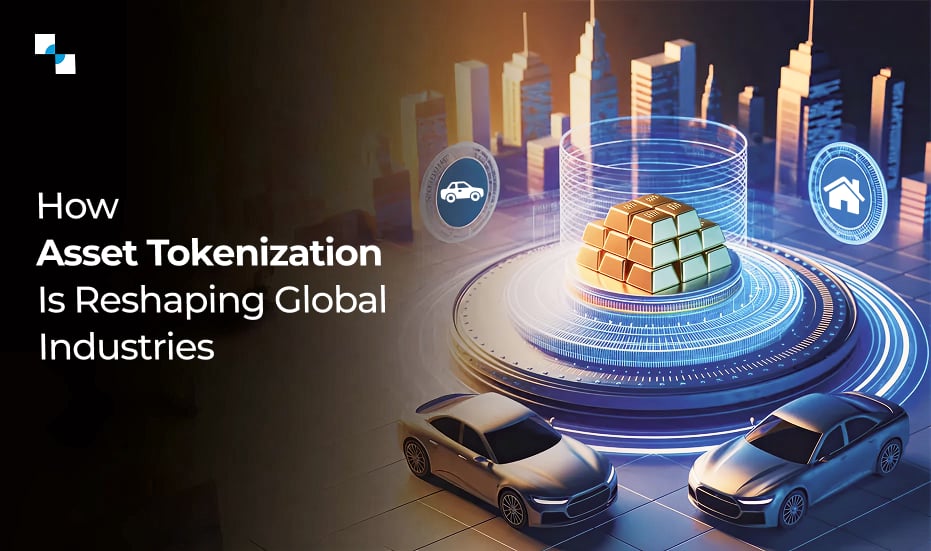The growing convergence of renewable energy and blockchain technology is revolutionizing the energy sector, providing solutions for more efficient, transparent, and decentralized energy systems. Blockchain is playing a pivotal role in enabling the tokenization of renewable energy projects—turning physical assets like wind farms, solar projects, and offshore wind turbines into tradable digital assets. This process not only enhances transparency and security but also increases liquidity and democratizes access to clean energy investments.
As the global energy market shifts towards sustainability, several groundbreaking projects are using blockchain to tokenize renewable energy assets. Here are five tokenization projects that are leading the way in reshaping the future of energy:

1. Dogger Bank Wind Farm (UK)
One of the largest offshore wind farms under development globally, Dogger Bank Wind Farm is situated off the coast of the UK in the North Sea. When completed, it will be capable of producing 3.6 gigawatts (GW) of electricity—enough to power up to 6 million homes. The project is being developed by Equinor and SSE Renewables, and it is a key part of the UK’s efforts to achieve its renewable energy targets.
Dogger Bank has entered the blockchain space with the introduction of tokenized energy trading, enabling decentralized and transparent transactions. This tokenization initiative is focused on bringing energy directly from the wind farm to the consumer in a more efficient and cost-effective manner by using blockchain to track energy generation and distribution. Through blockchain, the wind farm’s energy production is tokenized and traded on digital platforms, creating a more fluid and accessible market for renewable energy.
The tokenization of energy generated from Dogger Bank not only creates new opportunities for investors but also helps optimize energy distribution by ensuring that power generated by offshore wind can be directly tied to the carbon credits and energy certificates associated with it.
2. BP Morgan and Mona Offshore Project
The BP Morgan and Mona Offshore Project is another significant venture in the offshore wind energy sector, focused on tokenizing energy generated from wind farms in the North Sea. This innovative partnership aims to explore blockchain’s potential to improve energy trading by integrating tokenization and smart contracts into the project’s operations.
BP and Mona Offshore have been exploring the tokenization of renewable energy assets through their joint venture, leveraging blockchain technology to track the energy generated and traded between various stakeholders. This approach makes energy transactions more transparent, faster, and more secure, enabling both large institutions and individual investors to participate in the energy market.
By integrating blockchain, the BP Morgan and Mona Offshore project aims to cut through traditional inefficiencies, reducing transaction costs and helping to build trust among investors. The project is part of a broader initiative to establish sustainable and scalable tokenization solutions for renewable energy trading platforms. This will allow global access to clean energy projects and significantly increase market liquidity, especially for smaller-scale investors who can now participate in larger-scale renewable energy projects via tokenized assets.
3. Yellow Pine Solar Project (USA)
The Yellow Pine Solar Project in the United States is an exciting example of how blockchain technology can be utilized to improve renewable energy generation and investment. The project, located in the western United States, is being developed by TotalEnergies and SunPower and is expected to produce over 600 megawatts (MW) of solar energy once completed.
What makes the Yellow Pine Solar Project unique is its use of tokenized renewable energy certificates (RECs) to track and trade renewable energy production. By applying blockchain to energy certificates, TotalEnergies aims to simplify the process of certification and trading, making the solar project more transparent and accessible for investors. This tokenized REC system can be traded on decentralized platforms, enabling greater liquidity for both solar energy producers and investors.
In addition to improving trading efficiency, blockchain’s ability to reduce fraud and ensure the authenticity of energy generation certificates will also help increase investor confidence. The Yellow Pine Solar Project’s blockchain integration is paving the way for tokenization in large-scale solar projects and creating a model for future developments in the sector.
4. Baltic Power Offshore Wind Farm, Poland
The Baltic Power Offshore Wind Farm is a groundbreaking project in Poland that is expected to generate up to 1.2 gigawatts (GW) of renewable energy from offshore wind power. The project is being developed by PKN Orlen and Northland Power, with the goal of contributing significantly to Poland’s renewable energy transition.
Baltic Power’s tokenization efforts are focused on transforming the ownership structure of its energy assets. By tokenizing energy production rights, the project opens up new avenues for investors to gain exposure to renewable energy production in a previously inaccessible way. Blockchain technology is used to verify ownership and track the energy generated by the wind turbines, with tokens representing fractional ownership of the energy assets.
This integration of blockchain into the Baltic Power project allows investors to participate in the growing offshore wind energy market with a much lower entry barrier, while also ensuring transparent, secure, and efficient management of energy assets. As a result, this project is not only advancing Poland’s renewable energy goals but is also serving as a model for tokenizing offshore energy projects worldwide.
5. RWE’s 1.6GW Nordseecluster Project (Germany)
The Nordseecluster project, spearheaded by RWE in Germany, is one of the most ambitious offshore wind projects in the world. With a total capacity of 1.6 gigawatts (GW), this project will include a series of offshore wind farms in the North Sea, generating significant amounts of renewable electricity. The project is part of Germany’s broader energy transition goals to reduce carbon emissions and increase reliance on renewable energy.
RWE has been exploring blockchain solutions to tokenize its renewable energy assets, particularly through the use of blockchain-based trading platforms for renewable energy certificates (RECs). This approach allows RWE to manage the generation and sale of electricity more efficiently by leveraging blockchain to track the energy production process, from wind turbines to end-users.
Tokenization is also being applied to the ownership stakes in the Nordseecluster project, enabling fractional ownership of energy assets and improving liquidity for investors. This democratization of energy ownership could significantly reduce entry barriers, allowing smaller investors to participate in large-scale renewable energy projects.
The use of blockchain to track energy generation and tokenize ownership in such large-scale projects has the potential to scale globally. The Nordseecluster project is not only set to be a major contributor to Germany’s renewable energy portfolio but also an important step in the broader adoption of blockchain technology within the renewable energy sector.

Conclusion: The Future of Renewable Energy Tokenization
The tokenization of renewable energy projects is a game-changer for the industry. As demonstrated by these five projects—Dogger Bank Wind Farm, BP Morgan and Mona Offshore Project, Yellow Pine Solar Project, Baltic Power Offshore Wind Farm, and RWE’s Nordseecluster—blockchain technology is revolutionizing the way renewable energy is generated, traded, and invested in.
These tokenization efforts are creating new opportunities for investors, lowering entry barriers, and increasing liquidity in the energy markets. By combining renewable energy’s potential with blockchain’s efficiency, transparency, and security, these projects are helping pave the way for a more sustainable, decentralized, and democratized energy future.
As blockchain technology continues to evolve, tokenization will become a fundamental tool in addressing the challenges of global energy transition, unlocking new avenues for financing, and enabling a more inclusive approach to the clean energy revolution. The future of energy is decentralized, tokenized, and powered by blockchain.
Frequently Asked Questions
01. What is the role of blockchain technology in renewable energy?
Blockchain technology enables the tokenization of renewable energy projects, turning physical assets like wind farms and solar projects into tradable digital assets, enhancing transparency, security, and liquidity in the energy market.
02. How does tokenization benefit renewable energy projects?
Tokenization increases liquidity and democratizes access to clean energy investments, allowing for more efficient and transparent energy trading, and optimizing energy distribution by linking power generation to carbon credits and energy certificates.
03. Can you provide an example of a project using blockchain for renewable energy?
The Dogger Bank Wind Farm in the UK is a leading example, utilizing blockchain for tokenized energy trading, which allows for decentralized transactions and efficient energy delivery directly from the wind farm to consumers.







